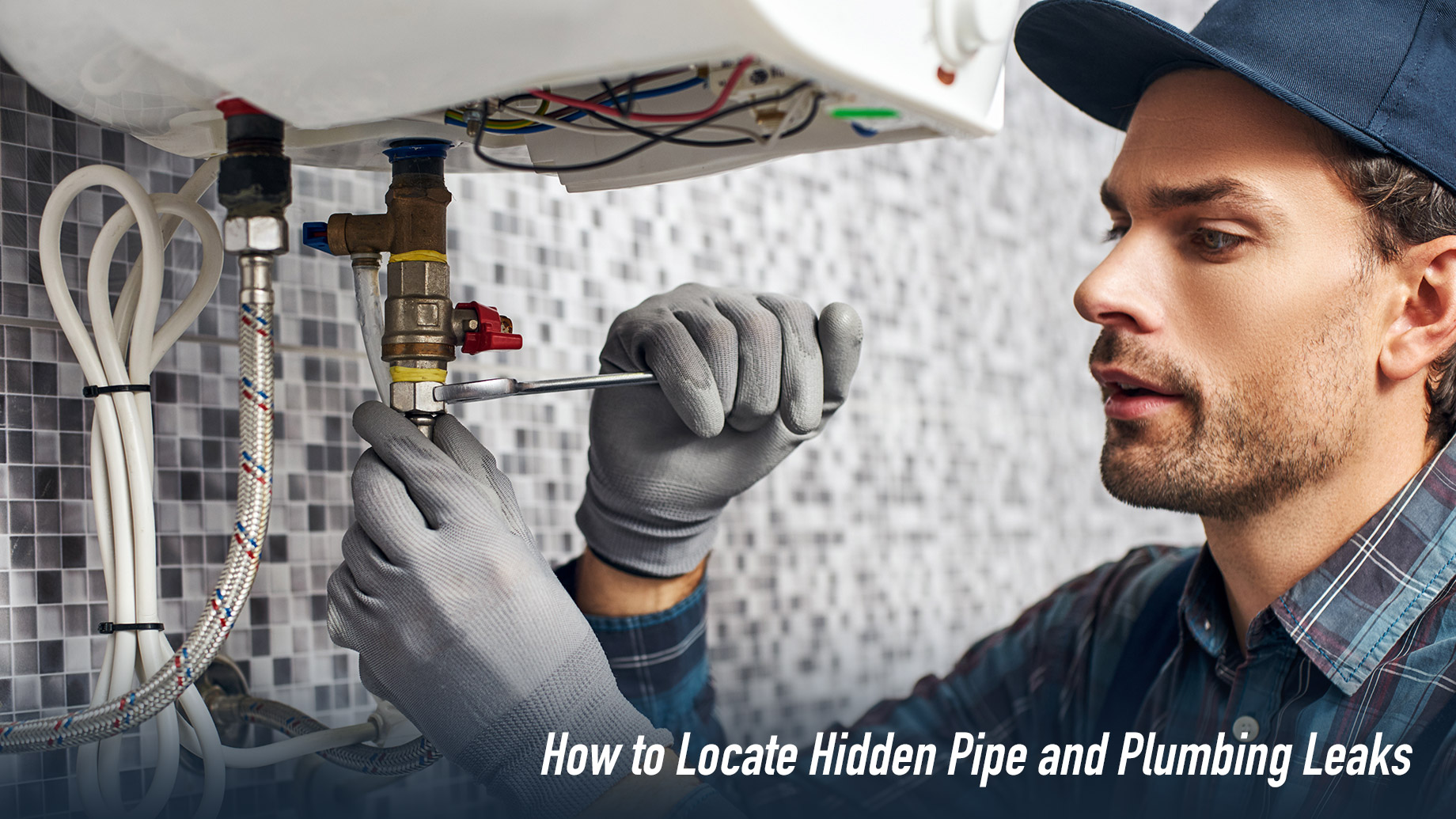
It’s bad enough when a pipe that’s perfectly visible suddenly bursts. The damage even a small amount of water can cause to your home can cost you some money, even if you areable to get the leak repaired relatively quickly. But when pipes hidden behind walls, chases, and ceilings suddenly burst, it can take a long time to find the leak, resulting in thousands of dollar’s worth of damage. According to Hunker.com, you should be thankful that hidden pipe and plumbing leaks are a rarity, and often are relegated to geographical locations where freezing temperatures can make pipes that aren’t properly insulated burst. But that doesn’t mean pipes that aren’tsubject to cold climates can’t corrode and spring a leak. Slow leaks can develop in pipes in any environment, resulting not only in untold damage to your home’s ceilings, walls, and floors, but also dangerous mold buildup. This can be especially true if you live in an old home.
Improperly sealed bathroom and kitchen fixtures can also result in damage, while slow drips that penetrate vanities and cabinets can, over time, destroy them. Leaky fixtures also cause flooring to warp and ceramic tiles to pop out of their grout bases. Luckily, most of these leaks are an easy fix, but repairing the damage they cause can be pricey. Even if these fixes are relatively simple, only you can determine if youare capable of making the repairs on your own. If not, you should seek out the professional plumbing services available via Fix It Right Plumbing or another equally reputable plumbing outfit.
In the meantime, how can you go about identifying hidden pipe and plumbing leaks? The answer lies in identifying the many signs of a leak.
Taking Aim at Leaking Pipes and Plumbing Fixtures
Says Hunker.com, the first indication of a burst pipe is a puddle of water at the base of a wall, or even in the middle of a floor. If you happen to catch a leak at this stage of the game consider yourself lucky. The water hasn’t yet penetrated the entire wall and/or ceiling and done costly damage. You can, however, be certain the drywall and ceiling tiles are wet, which is the beginning of damage and mold buildup. So how do you fix this leaky problem?Find a saw and cut away the piece of drywall where you believe the burst pipe has occurred. If it makes you a little sick knowing you will be damaging your wall, you need to realize that the piece of wet drywall or ceiling will have to be repaired anyway. But keep in mind, you must be cognizant of cutting into electrical wires or other buried cables. Or if you don’t believe you can handle this kind of repair, it’s best to call in the experts ASAP.
Leaks Coming from the Ceiling
Ifthe peace and serenity of your home is suddenly interrupted by the repetitive noise of a drip coming from overhead, you can be quite certain you have a leak that’s originating from an upstairs bathroom. If the drywall or drop ceiling has become discolored and feels spongy, it will have to be replaced. If that’s the case, tear apart as much of the ceiling as you need in order to find the source of the leak. More than likely you will reveal drainpipes for your tub, sink, and shower. One or all of the pipes could be cracked or corroded. Or the drain seals around the pipes might be loose, rusted out, or both. There could even be a leak in the shower pan. Once again, you can attempt to repair these leaks on your own and then replace the damaged ceiling. But if you’re not handy around the house, you’ll need to call on the plumbing professionals to get the job done correctly and swiftly.
Locating Leaky Toilets
Should your toilet tank suddenly spring a leak, chances are you’re going to know about it right away since the water will be puddling up behind the toilet. But toilet bowl leaks aren’t nearly as easy to detect. Hunker.com claims these leaks can actually go on for years before homeowners are able to take notice. This type of leak is almost always attributed to the wax ring that’s engineered to seal the joint that exists between the porcelain fixture and the drain opening. If the seal is damaged, water leaks down into the subflooring with every flush. Given enough time, the subfloor will rot. The toilet will begin to rock and sewer gas smells will emanate up from it. In this case, the toilet will have to be removed completely, the damaged subfloor entirely demolished and reconstructed. A brand new wax ring will need to be installed also so that the toilet doesn’t leak anymore.
Hidden leaks in pipes and plumbing fixtures can be annoying and in many instances, result in expensive construction repairs. That’s why it’s always a good idea to be aware of the signs that indicate a burst pipe and/or a leaky bathroom or kitchen fixture. If you don’t see or hear a drip, but your water bill is more expensive than usual, this too will indicate a hidden leak. If you happen to be very handy around the house, you might be able to tackle these leaky problems on your own. But chances are, it will pay in the short and long run to hire a reputable plumber who will fix it right the first time.